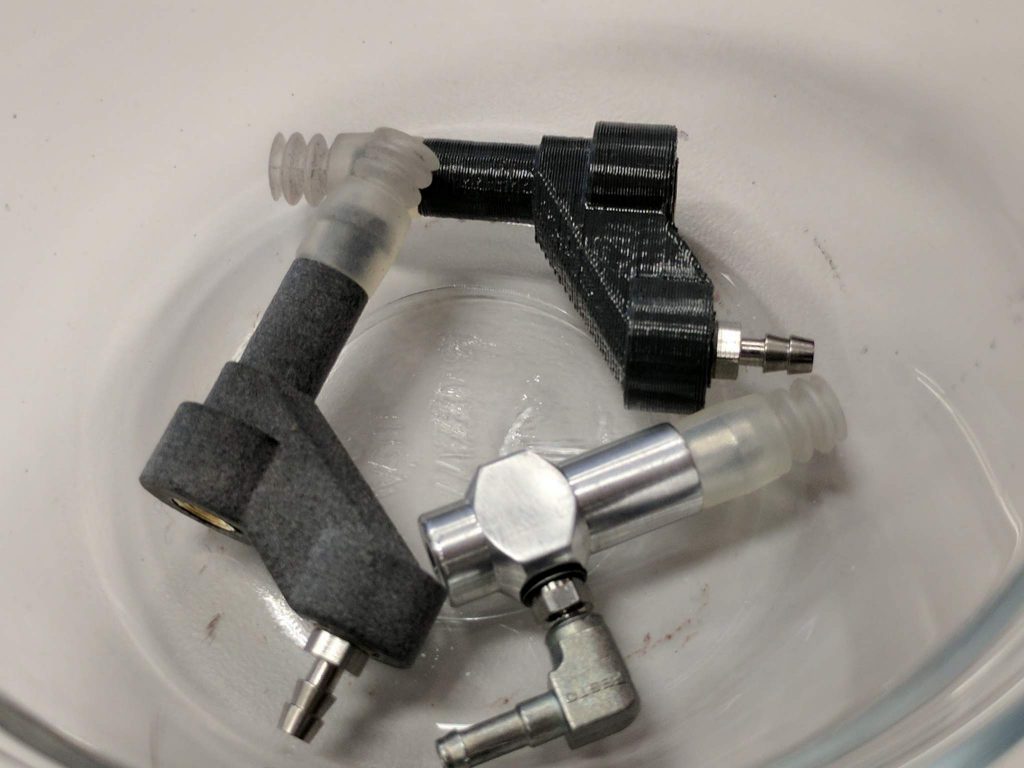This is an article in the 3D Printing Industry thought leadership series looking at the future of additive manufacturing. Clement Moreau is the CEO of Sculpteo, a company offering access to a wide range of 3D printing technologies. Sculpteo also provide a software suite for metal 3D printing called Agile Metal Technology.
3D Printing The Next Five Years by Clement Moreau CEO Sculpteo
5 years ago, the 3D printing market was really different from now. It was before the whole industry became mostly B2B focused. At Sculpteo, we believed a lot in the potential 3D printing had to change our daily lives, with everyone 3D printing everything they could think of for their personal use.
Well, that’s not exactly what happened. Even if we still believe in the potential for 3D printing to change our daily lives, we know it’s a long journey to get there. Today, the world of 3D printing has proven to be full of amazing opportunities we would never have expected nor imagined before!
So here are the 5 trends I foresee for the next 5 years.
Using 3D printing for production, and not just for prototyping anymore
3D printing has been mainly used for prototyping for many years. Since it allows fast iteration, it’s an ideal tool to reduce product development time. But demand for final products made using 3D printing keeps increasing year after year and this trend appears to be here to stay.
Each year at Sculpteo, we release a study called The State of 3D printing. Our 2017 edition illustrated this trend as 34% of our respondents use 3D printing for prototyping, 23% for proof of concept and a growing 22% of them actually use it for production.
Some major recent innovations in the world of 3D printing will obviously make this trend even stronger in the years to come. For instance, HP created a 3D printer called Multi Jet Fusion, which 3D prints up to 10 times faster than other processes, which makes production much easier. The rush for productivity is clearly open now! No doubt that in 5 years from now, 3D printing will be a common technique for creating finished products, and that it will represent the vast majority of the 3D Printing business.

Developing great 3D printing software
When it comes to 3D printing, software is obviously a major issue. You need high-performance tools to make the most of additive manufacturing. Either for design or for production optimization, developing user-friendly software is a challenge.
I already feel that there is a high demand for finding an answer to this need. That’s why we created Agile Manufacturing Technology (AMT), our new software helping professionals meet this challenge, based on our expertise in 3D printing acquired through the years.
In the next 5 years, these kind of tools will become even more important. The whole 3D printing experience will be more user-friendly, allowing a wider use of this technology, especially for production.
Creating more high-performance materials
To make 3D printing a major production tool, there is another challenge. The first materials created for additive manufacturing were quite different from commonly used materials for finished products, less resistant and with a less qualitative aspect.
But innovation has made its way through this issue, both in terms of materials and finishing options. Now, it’s possible to 3D print a product that has a great aspect, or high-performance mechanical properties, or both, depending on your needs. Metal 3D printing clearly evolves also, and 3D printed metals are even better than foundry today.
This trend is also here to stay and we can imagine that in 5 years it will even be possible to 3D print new materials, same or better than traditional industry materials opening a brand new range of opportunities.
Big worldwide players entering the 3D printing market
No doubt that 3D printing is a high-potential market. And no surprises: big worldwide companies foresee the opportunities it can offer. That’s why some of them already decided to bring their expertise to the world of additive manufacturing.
For instance, HP and General Electric became important players in the 3D printing market. They both have their own 3D printers with major innovations inside. Their expertise are combined with important investments, and they already disrupting the Stratasys vs 3D Systems game.
In the next 5 years, one or two other tech giants could totally enter the market and change the current dynamics. For instance, I would not be extremely surprised to see an Asian global tech company make its first steps with a game-changing innovation strategy.
Inventing new 3D printing processes rather than 3D printers
In the past years, the focus has been not only to create new complete 3D printers, but 3D printing processes than can be included in existing machines. Carbon’s CLIP technology is a good example of this.
More efficient once implemented, they can be more widely adopted by manufacturing companies. Moreover, having some parts of the production process using 3D printing, integrated in the whole production chain, helps making the transition between small-scale to large-scale 3D printing.
In the next five years, I predict innovations will keep being more and more focused on 3D printing processes rather than on complete 3D printers.
So, do you share my views on the future of 3D printing?
Let us know your thoughts in the comments below, and if you want to give us your perspective on the future of 3D printing then get in contact here. For more 3D printing insights and analysis, subscribe to our free newsletter and follow our active social media accounts.
You can find more information about Sculpteo here.



